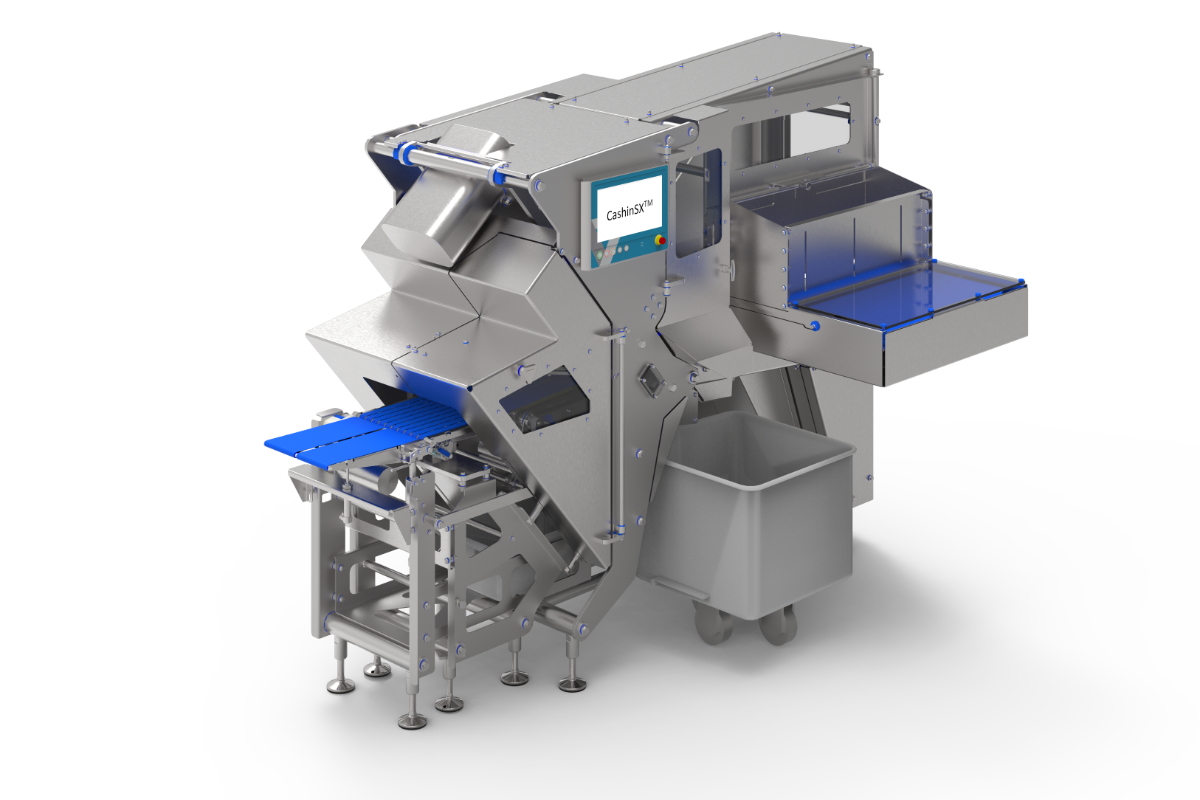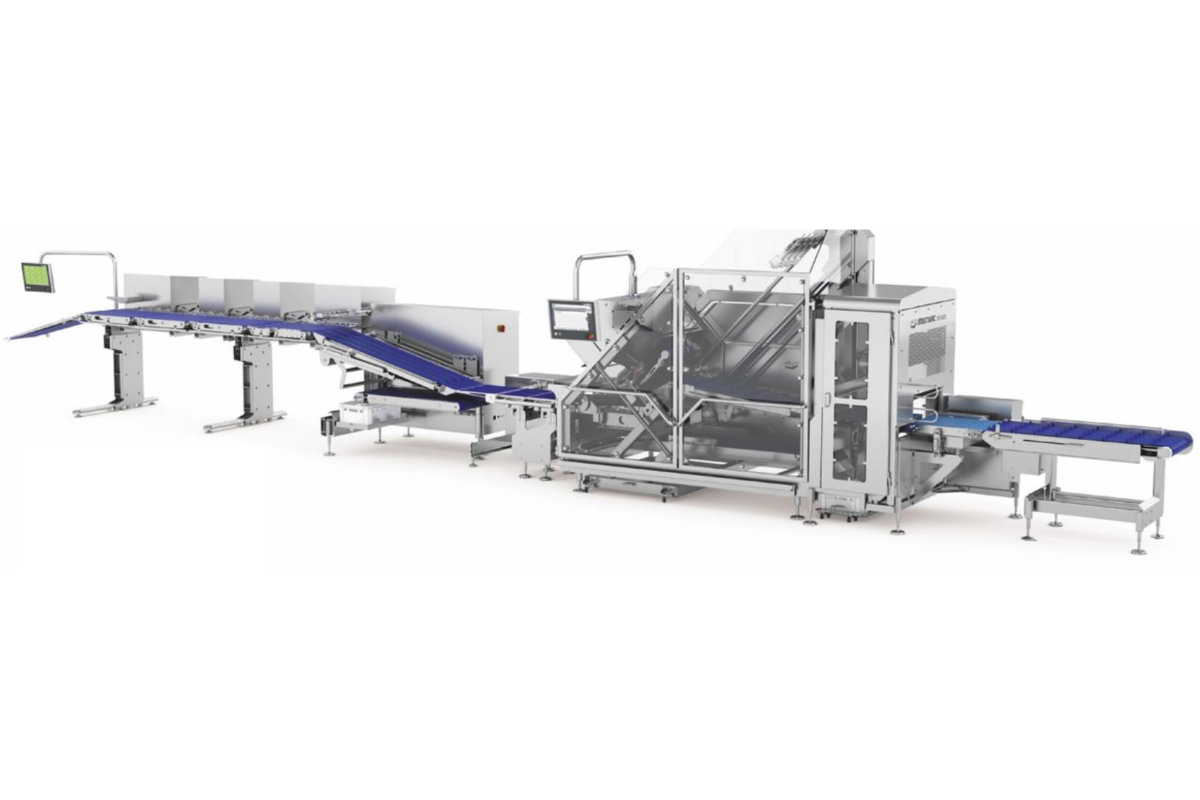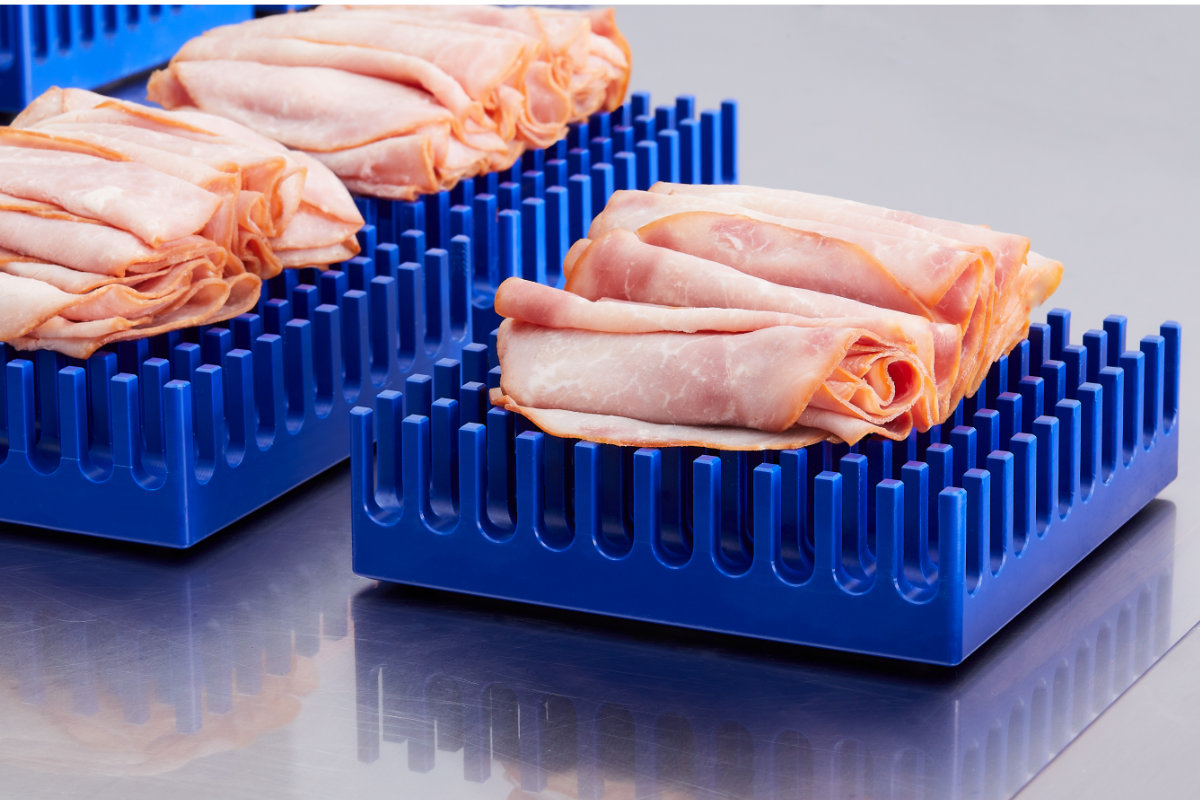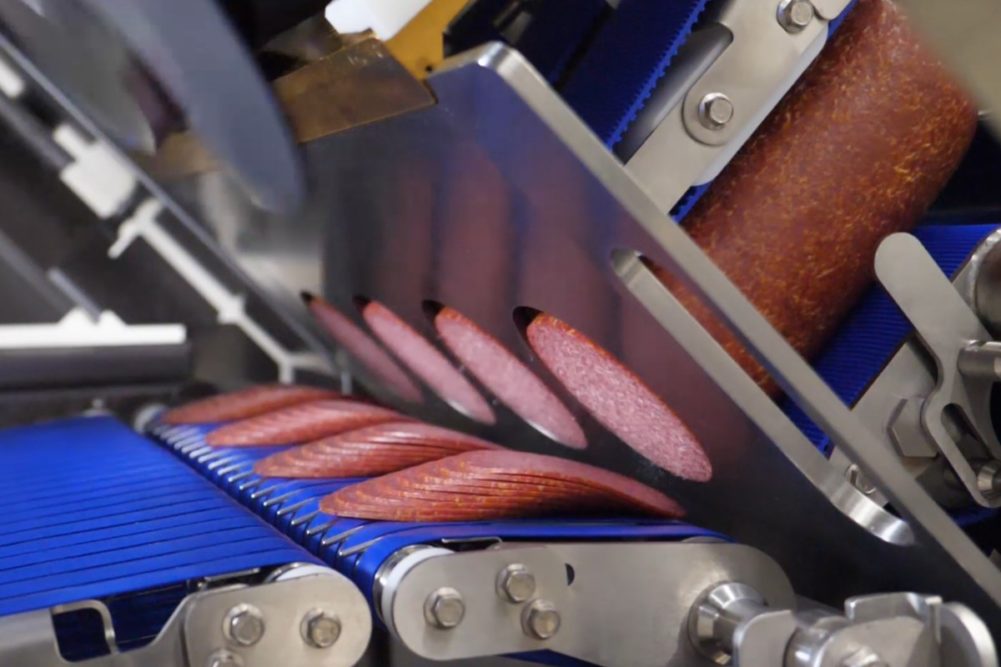In this year’s challenging business environment, slicer manufacturers are responding to the urgent needs of customers brought on by the reduction of labor and seamless integration.
Ryan Spencer, product market manager for chambers, portioning and slicing at Multivac Inc., Kansas City, Mo., noted the developments in automatically loading sliced portions into the packaging machine are helping customers achieve their goal of reducing the number of line workers needed to run production.
“The industry wants more connectivity and intelligence between all pieces of the line,” he said. “The entire strategy of Multivac is especially focused on these two issues. The reason we have expanded from being a packaging-only provider to a full-line solutions provider is that is the best way to deliver the tight integration that our customers are seeking. And our automation solutions have expanded significantly as customers both large and small struggle to hire enough labor to run their legacy production lines.”
Zach Bearson, director of business development for Kansas City, Mo.-based Weber Inc., noted the biggest buzz in slicing is not so much focused on the slicing technology itself, but the “Slice Line Solution” concepts being brought to market.
He explained that traditionally a customer designing a slicing line had to work with multiple vendors, and piece together a line that might perform adequately, but not up to a maximum ideal performance level, due to simple start/stop integration, black boxes on the line, etc.
“What we at Weber are offering today, facilitated by our increasingly diverse portfolio that now includes packaging solutions, is significant innovation in that sense – slice lines where the individual processes are better integrated, from the mechanical, electrical and digital perspectives, allowing customers to reduce the human interaction with machinery and achieve a more optimized performance with higher efficiencies and better utilization of space, and labor,” Bearson said.
Scott Scriven, vice president of the slicing unit business for Provisur, Mokena, Ill., noted between labor challenges, the current inflationary challenges and the effects of COVID, the pressure on processors is greater than it’s ever been.
“What that leads to is the need to find ways to reduce the need for labor and help our customers with machines that have higher uptime, better performance, and more throughput, using the same or less floor space,” he said. “We have probably sold more of our automated loading systems in the last two years than I have in the last 15 years combined because of these pressures.”
Provisur recently introduced the CashinSX Bacon Slicer, designed so that there’s not just more bacon being put through the slicer, but more perfect portions to the processor.
“We also recently introduced our free-movement system, a way for us to automate the product handling downstream from the slicer, especially for more complex applications,” Scriven said. “It’s a large magnetic platform that has prod carriers that levitate above the magnets. We could build all sorts of portions and it’s automatically programmed.”
 Provisur recently introduced the CashinSX Bacon Slicer, designed to deliver more bacon through the slicer and more perfect portions to the processor. (Source: Provisur)
Provisur recently introduced the CashinSX Bacon Slicer, designed to deliver more bacon through the slicer and more perfect portions to the processor. (Source: Provisur)
Evolving faster
The software side of slicing has come a long way in a relatively short amount of time in recent years. Everything from the user interface, connectivity with upstream and downstream equipment, remote monitoring and service options available today have been improved significantly.
“It really is remarkable how quickly software and intelligence features that used to be jaw-droppers are now basically table stakes,” Multivac’s Spencer said.
At IFFA in May, Weber had two complete slice lines on display where the lines, utilizing “smart” software and line control algorithms, made decisions about process and performance optimization that, up until now, could only be made by a well-trained operator.
“We’re bridging the gap between the tech industry and the food industry at an increasingly rapid pace,” Bearson said. “We’ve been able to push line performance boundaries by incorporating self-optimization technology with vision, and implement other measures, like portion tracking, to create greater possibilities for automation.”
Innovating slicing
Slicer equipment manufacturers have spent a lot of time and effort developing innovative solutions, and each has its own uniqueness and benefits for users.
“We truly started the design of our slicers with a blank sheet of paper,” Multivac’s Spencer said. “We eliminated the need for product separation rails in the infeed of the machine, which take time and expertise to set up properly. We simplified the gripper system, opting for a mechanically actuated gripper instead of a pneumatic system. This makes for a more hygienic solution with less ongoing costs due to fewer parts that need to be replaced.”
Most notably, Multivac drastically reduced the amount of time needed for changeovers, going from the industry standard of 30 minutes to around 5 minutes, creating huge efficiency and productivity savings.
Weber’s slicer offering separates itself in many aspects, Bearson noted, starting with a hygienic design and intuitive ease of use, maintenance, and cleaning, to process fit, where the company’s understanding of customers’ processes has helped to improve slicing’s position in overall production flow.
For instance, Weber’s new WeSLICE 9500, when utilizing product scanning, vario (or independent) product control, and the latest blade technology would have been considered impossible as few as 10 years ago.
“Our ability to obtain and utilize product information prior to slicing, then using advanced line control capabilities, manage the product and act on the information through the process, improves all the time as technology advances, allowing not only improved slicing metrics and OEE, but also increasing slice and portion quality,” Bearson said.
Brian Sandberg, director of product development for Provisur Technologies Inc., noted the company’s SX550 is one of its largest slicers and was designed to control the product all the way down to the blade, so it can get every last usable slice out of each log entered into the machine.
“Our machines are also reconfigurable,” he said. “We are unique in the ability to retrofit in the field, and I think that’s very important in the market. Flexibility is very important, so equipment needs to be adaptable today.”
 Innovations in its slicing machines led Multivac to drastically reduce the amount of time needed for changeovers, going to roughly 5 minutes from the industry standard of 30 minutes. (Source: Multivac)
Innovations in its slicing machines led Multivac to drastically reduce the amount of time needed for changeovers, going to roughly 5 minutes from the industry standard of 30 minutes. (Source: Multivac)
Maintenance matters
Maintenance on today’s slicers is easier than ever, as designs have factored this into the demand equation.
“A bit of grease at lubrication points in the slicing head, grippers and conveyors, replacing both transportation belts and blade motor drive belts on an annual schedule, and in general keeping the machine clean are the key steps needed to keep the machine productive for years to come,” Spencer said.
The old generation of slicers are often expensive to keep running, require specialty knowledge and experience and many don’t play nice with upstream and downstream equipment and modern ERP and productivity software suites.
At Weber, the team recognizes processing gaps and identifies potential improvements to slicing production processes, and when it sees an opportunity, it innovates.
 Provisur's free-movement system features prod carriers that levitate above the magnets of a large magnetic platform (Source: Provisur)
Provisur's free-movement system features prod carriers that levitate above the magnets of a large magnetic platform (Source: Provisur)
“Pressed/formed product slicing is another great example,” Bearson said. “For years, we saw press-to-slice processes that worked, but were not fully optimized relative to slicing performance. We decided to bring innovation to the space, with our emphasis on solutions, and brought to market our new WePRESS, an all-electric/servo driven meat press, that allows us to use information obtained within the preparation/pressing process downstream along with our advanced line control to maximize our slicing result.”
For these reasons, many customers are quick to upgrade their slicers.
“We keep our eyes and ears open and spend a lot of time on location with our customers,” Spencer said. “We also know our current slicer offering is a great solution for medium to high-output customers, but are eager to develop new slicing solutions for smaller customers and for ultra-high output customers. Without question, the next five or so years will be a busy and exciting time for the slicing side of the industry.”



